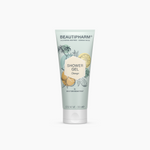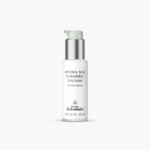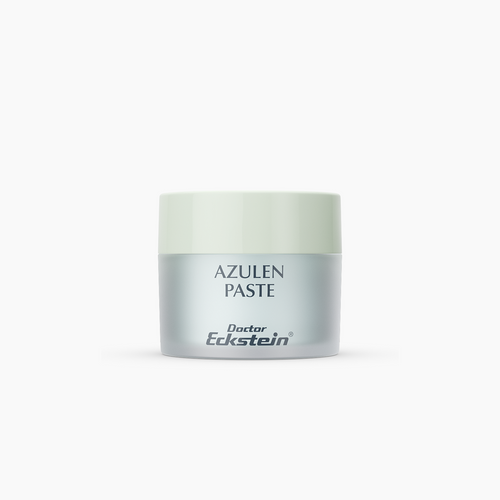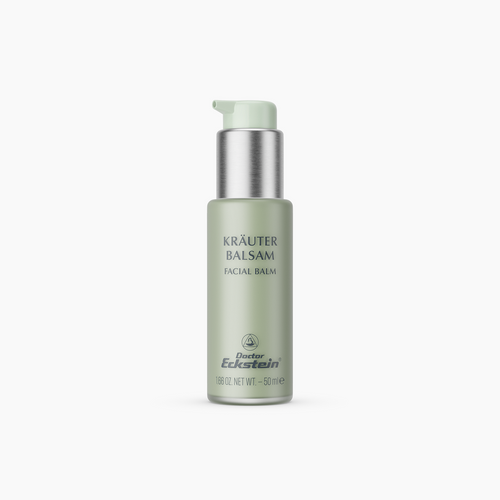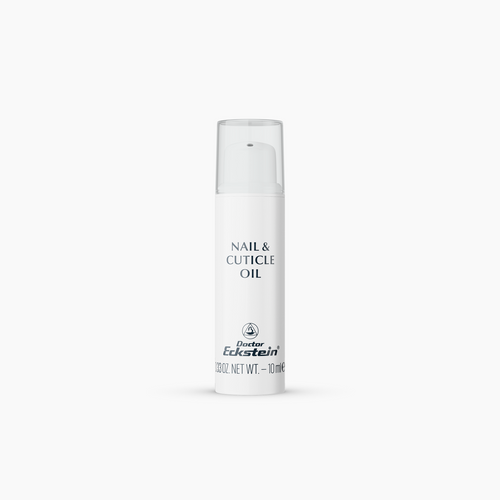These days, most of us analyze ingredient labels like detectives. Whether it’s the food on our plates or the products on our bathroom shelves, we want to know: Is this safe? Is this good for me?
With the rise of clean beauty and natural skincare, a curious question keeps popping up: should your skincare be edible? If an ingredient is healthy to eat, does that automatically mean it is great for your skin?
At first glance, it seems like a no-brainer. If eating an avocado can be great for your heart, shouldn’t a freshly mashed avocado work wonders on your skin? If olive oil is considered a superfood, doesn’t that make it a super-moisturizer, too?
The connection feels intuitive, but skincare and nutrition don’t play by the same rules.
The truth is, just because something is healthy to eat doesn’t mean it is the best for your skin — and vice versa. The way our bodies process ingredients internally is completely different from how our skin absorbs and utilizes them.
So before you start slathering your favorite smoothie ingredients on your face, let’s take a closer look at whether your skincare should really double as a snack.
The Difference Between Ingestible & Topical Ingredients
Bloodstream Absorption vs. Skin Penetration:
When you eat food, your digestive system breaks it down into tiny molecules that can be absorbed through the intestines and delivered to the bloodstream. The body selectively processes what it needs, allowing nutrients to be absorbed while eliminating anything it doesn’t through the digestive system, liver, and kidneys.
Skincare, on the other hand, works on a completely different level. The skin is designed to be a protective barrier, not a sponge. Unlike the digestive system, which actively breaks down and transports nutrients to the bloodstream, the skin primarily serves as a defense mechanism, tightly limiting what passes through its layers to the bloodstream.. The goal of skincare is to have ingredients penetrate the top layers of skin, rather than be absorbed into the bloodstream, helping the skin to look and feel its best.
With this in mind, skincare ingredients must be formulated in a way that allows them to penetrate the skin’s surface, allowing the ingredients to have their intended benefits. The key to enhancing skin health lies in understanding these physiological elements and formulating products based on what the skin needs, rather than nutrition.
Dietary Nutritional Needs vs. Skin Health Needs:
Your body’s internal needs are vastly different from what your skin requires. For overall health, your body thrives on a balance of proteins, fats, fiber, vitamins, and minerals to support organ function, immunity, and energy levels.
Skincare, however, aims to achieve more specialized roles of:
-
Hydration: Keeping moisture locked into the skin.
-
Protection: Defending against environmental damage like pollution, UV rays, and free radicals.
-
Repair & Renewal: Helping the skin heal from stress, irritation, and aging factors.
The number one goal of a skin care formulation should be to make your skin happy while addressing your skin’s unique needs.
Internally Indigestible vs. Topical Application:
Some botanical extracts, oils, and compounds are excellent when formulated for topical use but can be problematic if ingested.
Take jojoba oil as an example. It’s a powerhouse skincare ingredient known for its ability to deeply hydrate and balance oil production. However, it is an indigestible wax ester, leading to digestive distress if consumed.
Similarly, lanolin and beeswax are excellent for creating protective barriers on the skin, locking in moisture and soothing irritation. But nutritionally, they offer no value and can be difficult to digest.
Common Myths About Edible Skincare
Let’s address some of the biggest misconceptions surrounding edible skincare:
1. “If you can eat it, it is also good to apply to your skin.”
One common myth is that if something is great to eat, it must be good for your skin as well. While there can be overlap in ingredients (more on that in a moment), this is not always the case. The skin has different needs and sensitivities compared to the digestive system, and our nutritional needs are different from our topical skin health needs.
Some ingredients are highly beneficial when eaten but don’t perform as well on the skin. Olive oil, for instance, is a heart-healthy unsaturated fat packed with antioxidants. While it can be used in skincare, it’s not always the best choice of oil as it can be heavy, prone to oxidation, and can clog pores for some skin types. At Doctor Eckstein, we prefer oils that are easier to work with and provide more direct skin benefits.
2. “If a skincare product is safe for my skin, it should be safe to eat.”
While skincare products should undergo rigorous testing to confirm their safety when applied to the skin, that does not mean they are designed for ingestion. Skincare ingredients are designed to topically care for your skin but can cause digestive distress or discomfort when ingested, leaving them best suited for your face.
3. “Natural ingredients are always better for the skin.”
This isn’t necessarily true. There are various botanical extracts that are natural, and may even be edible, but are ultimately irritating to the skin. Poison ivy, for example, is natural, but you wouldn’t want to apply it to your face. Skincare formulations require stability, efficacy, and safety testing to make sure they work well on the skin without adverse effects.
While natural ingredients can be beneficial, they are not inherently superior to bio-identical synthetic ones for skincare. In fact, many bio-identical synthetic ingredients are designed to be more pure, stable, and effective.Some even are more environmentally friendly, as they are produced in the lab, requiring less land, water, and resources to.
Overlap: Ingredients That Benefit Both Skin & Body
Some ingredients, including many vitamins and botanical extracts, offer benefits both when consumed and when applied to the skin, but they function differently in each case, often in different forms. Understanding these differences helps maximize their effectiveness. Here are some examples:
Vitamin C: The Skin Glow Booster
Vitamin C, found in citrus fruits and leafy greens (among many other fruits and vegetables),, is essential for collagen production and immune health when consumed internally. When used topically in skincare, it brightens skin, evens out pigmentation, and protects against environmental damage. While dietary vitamin C supports skin from within, topical forms deliver more targeted skin care results. Vitamin C in the food we eat is found as ascorbic acid, which is not a very stable molecule, making it unsuitable for skincare. When producing skincare products, the vitamin C is often attached to another compound, forming a stabilized version such as Tetrahexyldecyl Ascorbate or Magnesium Ascorbyl Phosphate.
Vitamin E: The Skin Protector
Nuts, seeds, and plant oils are rich sources of vitamin E when consumed, helping to maintain cell health. Topically on the skin, it acts as an antioxidant shield and helps strengthen the skin barrier. While both forms help combat oxidative stress, topical application ensures direct skin benefits. When eating vitamin E, it’s often in the form of alpha-tocopherol while in skincare the stabilized version of tocopheryl acetate is preferred.
Turmeric Extract: The Skin Antioxidant Hero
Consumed in food or as a supplement, turmeric’s curcumin content can help modulate and reduce inflammation and support overall health. On the skin, the curcuminoids in turmeric are excellent antioxidants, protecting the skin, and helping with skin brightening in higher doses. While dietary turmeric requires certain conditions for ideal absorption (ex: pairing with fat sources), skincare formulations optimize it for topical use. At Doctor Eckstein we use the curcuminoid tetrahydrocurcumin, isolated from turmeric, to provide a higher dosage, targeted effect.
Fatty Acids: The Skin Moisture Savior
Omega-3 fatty acids are essential in a balanced diet for heart and brain health, including cognitive function. However, slathering fish oil on your face won’t deliver the same internal benefits, as that fish oil won’t be absorbed into your bloodstream. Instead, skincare products use specific fatty acids in a way that complements the skin’s structure, providing hydration and moisture to help your skin looking and feeling its best. It’s important to choose oils in skin care products that are stable and don’t easily go rancid.
How Doctor Eckstein Prioritizes Safe & Effective Skincare
At Doctor Eckstein, we design and manufacture every product with safety and effectiveness in mind. Skincare should nourish and protect the skin without any harmful ingredients, and that starts with strict testing and high-quality formulations. To learn more about our strict quality control and safety measures, read our Blog “Made in Germany”. Our number one priority is making sure you have happy skin, so in addition to our high-quality standards, we make sure each formulation performs its best, and is safe and effective, with the following: .
Dermatological Testing for Skin Compatibility
All of our formulas are designed to provide benefits without irritation. We perform independent testing by certified labs to guarantee optimum skin compatibility. In over 75 years of testing, there has never been a single instance of skin incompatibility. All tested products have received a dermatological test rating of “excellent,” the highest rating possible.
Physical Stability Testing to Maintain Potency
A skincare formula needs to remain effective from the first drop to the last. Products go through stability testing to confirm they don’t break down, separate, or lose strength when exposed to air, light, or temperature changes. This process helps keep the ingredients active and reliable.
Microbial Testing to Keep Products Pure
To prevent contamination, each formula is tested for bacteria, mold, and other unwanted microbes. Skincare products should be clean and safe to apply daily without introducing anything harmful to the skin.
Formulated for Skin, Not for Eating
Doctor Eckstein products contain high-quality, natural, and pharmaceutical-grade ingredients chosen for their benefits to the skin. Like other skincare products, they are not designed for consumption.
If a small amount of product is accidentally ingested, it is unlikely to cause harm. The ingredients meet high safety standards, but skincare works best when applied as intended. Following application instructions helps maximize results and keeps the focus on healthy, radiant skin.
Doctor Eckstein’s approach is rooted in science, not trends. Every formula is made with care to support skin health in the best possible way.
The Real Question You Should Be Asking
Rather than asking, “Should I be able to eat my skincare?” the better question is, “Is my skincare safe, effective, and beneficial for my skin?”
Focus on finding products formulated with ingredients that truly enhance your skin’s health. Our products at Doctor Eckstein are backed by science, dermatologically tested, and formulated with high-quality ingredients to deliver visible results.
While your skincare doesn’t need to be edible, it absolutely should be formulated with your skin’s best interests in mind.
Want to learn more about what makes Doctor Eckstein products different? Explore our collections today!
Wishing you Happy Skin,
Dr. Verena Eckstein (ND) and the Doctor Eckstein Team
